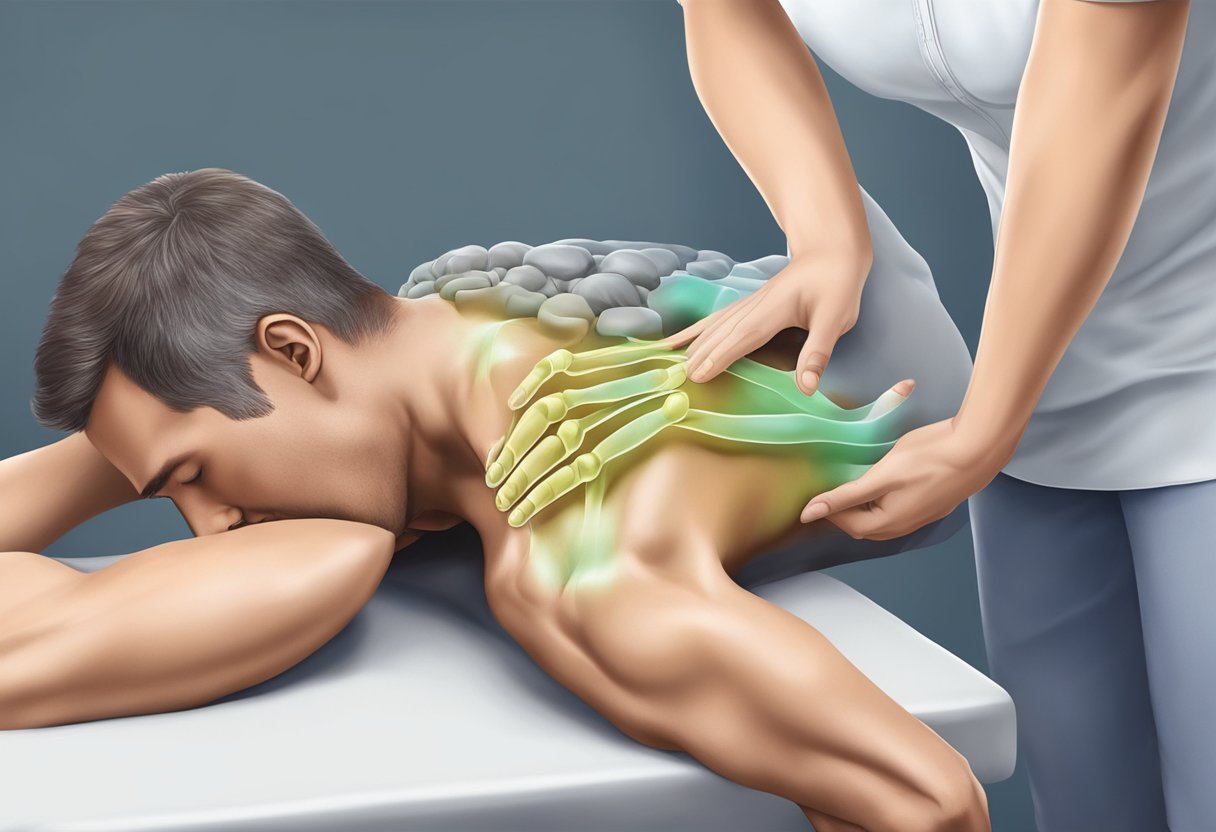Understanding the Role of Chiropractic Care
Chiropractic care is a form of alternative medical care that focuses on the diagnosis and treatment of musculoskeletal and neuro-skeletal disorders. Chiropractors are healthcare professionals who specialize in manual manipulation of the spine, joints, and muscles to alleviate pain and improve overall health and posture.
Chiropractors believe that the body has an innate ability to heal itself, and that by removing interference to the nervous system, the body can function optimally.
What does Chiropractors do?
Chiropractors use a variety of techniques to treat their patients, including spinal adjustments, soft tissue therapy, and exercise and nutritional counselling. They work with patients to create individualized treatment plans that address their specific needs and goals. Chiropractic care is often used to treat conditions such as back pain, neck pain, headaches, and joint pain, but it can also be used to improve overall wellness and prevent future injuries.
If you are considering chiropractic care, it is important to find a licensed and experienced chiropractor who can provide safe and effective treatment. Chiropractors undergo extensive training and education to become licensed healthcare professionals, and they are required to adhere to strict ethical and professional standards. With the right chiropractor and treatment plan, chiropractic care can be a safe and effective way to improve your health and wellbeing.

Understanding Chiropractic Care
Chiropractic care is a form of alternative medicine that focuses on the diagnosis and treatment of musculoskeletal disorders, particularly those affecting the spine. Chiropractors use a variety of techniques to manipulate the spine, joints, and soft tissues to relieve pain and improve overall function.
History and Philosophy of Chiropractic
The history of chiropractic care dates back to the late 19th century when Daniel David Palmer, a magnetic healer, performed the first chiropractic adjustment on a patient with hearing loss. Palmer believed that misalignments in the spine, which he called subluxations, were the root cause of many health problems. He developed a system of spinal manipulations to correct these subluxations and restore the body's natural healing abilities.
Today, chiropractic care is based on the philosophy that the body has an innate ability to heal itself. Chiropractors believe that by removing interference to the nervous system, they can help the body function at its optimal level.
Education and Licensing Requirements
To become a chiropractor, one must complete an undergraduate degree in a related field, followed by a Doctor of Chiropractic (DC) degree from an accredited chiropractic college. The DC program typically takes four years to complete and includes extensive training in anatomy, physiology, and chiropractic techniques.
After completing their education, chiropractors must pass a licensing exam to practice in their state or province. They must also complete continuing education courses to maintain their license and stay up-to-date with the latest developments in chiropractic care.
Roles and Responsibilities of Chiropractors

Chiropractors are trained to diagnose and treat a variety of musculoskeletal conditions, including back pain, neck pain, headaches, and joint pain. They use a range of techniques, including spinal adjustments, soft tissue therapy, and exercise therapy, to help their patients achieve optimal health.
Chiropractors also play an important role in educating their patients about healthy lifestyle habits, such as proper nutrition and exercise. They work closely with other healthcare professionals to provide comprehensive care for their patients.
In summary, chiropractic care is a safe and effective form of alternative medicine that can help relieve pain and improve overall function. Chiropractors are highly trained healthcare professionals who play an important role in helping their patients achieve optimal health.
Diagnosis and Treatment Planning

Chiropractors are healthcare professionals who specialize in diagnosing and treating various musculoskeletal issues, particularly those related to the spine. They use non-surgical methods to promote overall wellness and alleviate back pain, head pain, and other physical ailments.
Initial Patient Assessment
The initial assessment is a crucial part of the chiropractic process. During this stage, the chiropractor will ask the patient about their medical history and any current symptoms they are experiencing. The chiropractor will also perform a physical exam, which may include X-rays or other imaging studies, to identify any underlying issues that may be contributing to the patient's symptoms.
Developing a Treatment Plan
Once the chiropractor has completed the initial assessment, they will develop a treatment plan that is tailored to the patient's specific needs. This plan may involve a variety of methods, such as hands-on manipulation of the spine and joints, massage therapy, and exercise. The chiropractor will work with the patient to ensure that the treatment plan is effective and that the patient is comfortable with the proposed approach.
Referral and Collaboration
In some cases, the chiropractor may refer the patient to another healthcare professional, such as a physical therapist or orthopedic surgeon, for further evaluation or treatment. Chiropractors may also collaborate with other healthcare professionals to ensure that the patient receives the best possible care. This collaboration may involve sharing information about the patient's medical history, symptoms, and treatment plan to ensure that all parties are working together to achieve the best possible outcome.
Overall, chiropractors play an important role in diagnosing and treating musculoskeletal issues. Through careful assessment, development of a tailored treatment plan, and collaboration with other healthcare professionals, chiropractors help patients achieve optimal health and wellness.
Chiropractic Techniques and Therapies

Chiropractic care is a non-invasive and drug-free approach to treating musculoskeletal disorders. Chiropractors use a variety of techniques and therapies to help their patients manage pain, improve mobility, and promote overall wellness. The following are some of the most common chiropractic techniques and therapies used by chiropractors.
Spinal Adjustments and Manipulation
Spinal adjustments and manipulation are the hallmark of chiropractic care. These techniques involve applying a controlled force to the spine to realign the vertebrae and improve joint function. Chiropractors use their hands or a small instrument to apply the force, and the treatment is usually painless. Spinal adjustments and manipulation can help reduce pain, improve mobility, and restore normal function to the spine.
Soft Tissue Therapy and Exercises
Chiropractors also use soft tissue therapy and exercises to help their patients manage pain and improve mobility. Soft tissue therapy involves using various techniques to manipulate the soft tissues of the body, such as massage or trigger point therapy. These techniques can help reduce pain, improve circulation, and promote relaxation. Chiropractors may also prescribe exercises to help their patients improve strength, flexibility, and range of motion.
Adjunctive Therapies
In addition to spinal adjustments and soft tissue therapy, chiropractors may use adjunctive therapies to help their patients manage pain and improve overall wellness. These therapies include ultrasound, electrical stimulation, and hot or cold therapy. Ultrasound therapy uses high-frequency sound waves to promote healing and reduce inflammation. Electrical stimulation involves applying a mild electrical current to the affected area to reduce pain and improve circulation. Hot or cold therapy involves applying heat or cold to the affected area to reduce pain and promote healing.
Overall, chiropractic care is a safe and effective approach to managing musculoskeletal disorders. Chiropractors use a variety of techniques and therapies to help their patients manage pain, improve mobility, and promote overall wellness. If you are experiencing pain or discomfort, consider scheduling an appointment with a chiropractor to see if chiropractic care is right for you.
Conditions Treated by Chiropractors

Chiropractors are medical professionals who specialize in the diagnosis, treatment, and prevention of musculoskeletal disorders. They use non-invasive techniques to alleviate pain, improve joint mobility, and restore proper function to the body. Chiropractors typically treat conditions related to the body's structure, including the spine, joints, and muscles.
Musculoskeletal Disorders
Chiropractors are trained to treat a wide range of musculoskeletal disorders, including sprains, strains, joint dysfunction, and degeneration. They use a variety of techniques, such as spinal adjustments, soft tissue therapy, and exercise rehabilitation, to help patients recover from injuries and reduce pain. Chiropractic care can also be effective in managing chronic conditions like arthritis and sciatica.
Neck and Back Pain
Neck and back pain are two of the most common reasons people seek chiropractic care. Chiropractors use spinal adjustments and other techniques to alleviate pain and improve mobility in the neck and back. They may also recommend exercises and lifestyle changes to help prevent future episodes of pain.
Headaches and Migraines
Chiropractic care can also be effective in treating headaches and migraines. Chiropractors use spinal adjustments to alleviate tension in the neck and improve blood flow to the head. They may also recommend lifestyle changes, such as stress management techniques and dietary modifications, to help prevent future episodes of headaches and migraines.
Overall, chiropractors offer a non-invasive, drug-free approach to treating a wide range of conditions. They work closely with patients to develop individualized treatment plans that address their unique needs and goals. If you are experiencing pain or discomfort, consider consulting with a chiropractor to explore your treatment options.
Benefits and Considerations

Effectiveness of Chiropractic Care
Chiropractic care is a non-invasive and drug-free approach to treating musculoskeletal issues. It can help relieve pain and improve the body's overall function by using various treatments depending on the patient's needs. According to Healthline, chiropractic treatment may help relieve pain from conditions affecting bones, cartilage, connective tissue, joints, and muscles. Chiropractic treatment often focuses on the spine but may also focus on other areas of the body.
Studies have shown that chiropractic care can be effective in treating certain conditions such as lower back pain, neck pain, and headaches. However, it is important to note that the effectiveness of chiropractic care may vary depending on the individual and the condition being treated.
Risks and Limitations
While chiropractic care is generally considered safe, there are some risks and limitations to consider. The Good Body states that visiting a chiropractor does, in rare cases, come with a few small risks. These risks include soreness, stiffness, and temporary headaches after treatment. It is important to discuss any concerns or potential risks with a chiropractor before beginning treatment.
It is also important to note that chiropractic care may not be appropriate for everyone. People with certain medical conditions, such as osteoporosis or spinal cord compression, may need to avoid chiropractic care or seek alternative treatments.
Insurance and Cost
Chiropractic care may be covered by some insurance plans, but it is important to check with your insurance provider to determine what is covered. The Canadian Chiropractic Association states that many chiropractors offer flexible payment plans and accept multiple forms of payment, including cash, credit, and debit.
The cost of chiropractic care may vary depending on the location and the chiropractor's experience. According to The Good Body, the cost of an initial consultation and treatment may range from $60 to $200, with subsequent treatments ranging from $30 to $150. It is important to discuss the cost of treatment with a chiropractor before beginning treatment to avoid any unexpected expenses.
Overall, chiropractic care can offer many benefits for those seeking a non-invasive and drug-free approach to treating musculoskeletal issues. However, it is important to consider the potential risks and limitations, as well as the cost and insurance coverage, before beginning treatment.

Frequently Asked Questions (FAQs)
What can I expect during my initial visit to a chiropractor?
During your first visit to a chiropractor, the chiropractor will ask you questions about your medical history and the symptoms you are experiencing. They may also perform a physical examination to assess your range of motion, posture, and spinal alignment. Based on your examination and medical history, the chiropractor will develop a treatment plan that is tailored to your specific needs.
How does a chiropractor provide relief from lower back pain?
Chiropractors use a variety of techniques to provide relief from lower back pain. One of the most common techniques is spinal manipulation, which involves applying pressure to the spine to realign the vertebrae. Chiropractors may also use other techniques such as massage, stretching, and exercise to help alleviate pain and improve mobility.
What techniques do chiropractors use to determine areas needing adjustment?
Chiropractors use a variety of techniques to determine areas that need adjustment. One of the most common techniques is palpation, where the chiropractor uses their hands to feel for areas of tension or misalignment in the spine. They may also use X-rays or other imaging techniques to get a better view of the spine and identify problem areas.
Are chiropractors qualified medical professionals?
Yes, chiropractors are qualified medical professionals who have completed extensive training in the field of chiropractic care. In order to become a licensed chiropractor, individuals must complete a four-year Doctor of Chiropractic program and pass a licensing exam.
Can chiropractic adjustments effectively treat conditions like sciatica?
Chiropractic adjustments can be an effective treatment for sciatica, which is a condition that causes pain and discomfort in the lower back and legs. By realigning the spine and reducing pressure on the sciatic nerve, chiropractic adjustments can help alleviate pain and improve mobility.
What are some potential risks or downsides of chiropractic care?
While chiropractic care is generally considered safe, there are some potential risks and downsides to consider. These may include soreness or discomfort after an adjustment, the risk of stroke or other serious complications, and the potential for over-treatment or unnecessary treatment. It is important to discuss any concerns or questions you may have with your chiropractor before beginning treatment.
Comments
Post a Comment